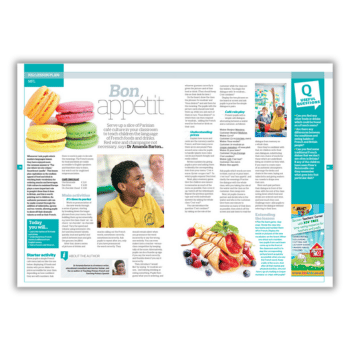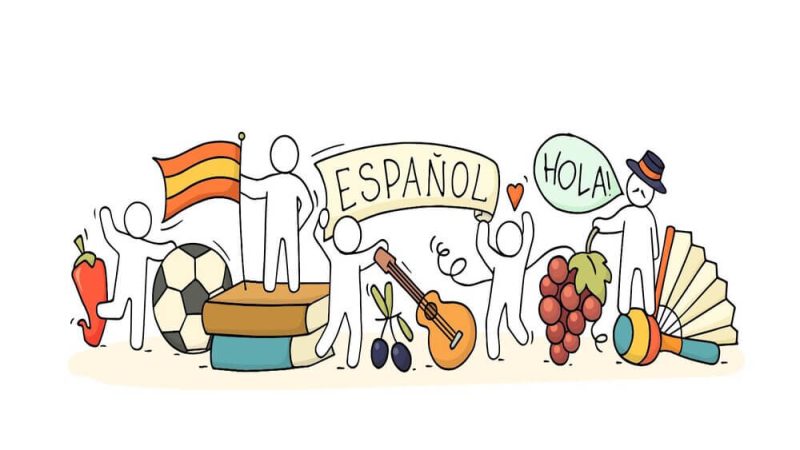Foreign languages in primary schools – 8 ways to embed MFL

Teaching modern languages doesn’t need to be limited to a thirty-minute slot each week…

Here are some ideas for embedding foreign languages more widely in your weekly timetable…
Hello, goodbye
As the children arrive in the morning, or come back into the classroom after lunch, greet each of them in a foreign language and ask them to copy you.
This doesn’t have to be the language they’re learning in school. It’s helpful for them to hear a range of languages, even if it’s only a single word.
Once they’re all in class, can anyone tell you which language you used? If there are children who speak another language at home, ask them to deliver the greeting at the door. At the end of the day, say goodbye in the language.
Register games
When you do the register, ask the children to give you a word or phrase they remember from their last language lesson, trying not to repeat what the previous child said. They can either say the word or write it on a mini whiteboard.
MFL (movement, fun, language)
Get your pupils doing PE in a foreign language. To do a basic warm-up activity, give them instructions in the foreign language.
For example, in Spanish say caminad walk; saltad jump; bailad dance; más rápido faster; más lento slower; parad stop.
Get the children running around in a circle until you blow the whistle. When they’ve stopped, call out a number in the language. The children then form groups containing that number.
Un, deux, trois…
Numeracy activities you normally do in class can easily be done in a foreign language. For instance, hand out a set of loop cards to the class.
Arrange them so that on the left-hand side there is a sum, and on the right an answer. The first child reads out the sum on the left in the foreign language, e.g. un plus deux, and is answered by the child who has the correct answer on their domino: trois.
This child then reads out their sum, and the game continues until the chain comes back to the first child.
In ‘Think of a number’ (Je pense à…) pupils take turns to guess a number you’ve secretly written down. You respond with either oui or non, then moins (less) or plus (more). The child who guesses correctly then takes on the role of choosing a new secret number.
Familiar words
In history, make links with the Norman invasion by looking at words the English language borrows from French, such as bouquet, café, chauffeur, chic, cul de sac, fiancé, omelette, restaurant.
Looking at language imported from Spanish is also a good literacy activity: la barbacoa (barbecue), la cafetería (cafeteria), el chocolate (hot chocolate), el huracán (hurricane), el mosquito (mosquito), la patata (potato), la tortilla (omelette).
Practise saying the words out loud to help pupils avoid anglicised pronunciation. Can the children find further examples of ‘borrowed’ words from other languages?
Countdown
Signal to the class that you want their attention by counting down from ten in the language(s) they’re learning in school, asking them to join in with you.
Languages everywhere
Create a multilingual environment in your classroom by getting your pupils to create posters showing the foreign language words for classroom objects such as ‘door’ and ‘desk’.
Train their listening and reading skills by saying the name of an object and pointing to the poster. If you’ve said it correctly, pupils point to it, too. If you’re pointing to the wrong object, they point at the correct one.
What comes next?
Revise sequences of words, such as days of the week, months, letters of the alphabet, numbers, or clock times with a quick catch-the-ball quiz.
As you say Montag, throw a sponge ball to a child, who should then give you the next day of the week: Dienstag. They throw the ball to another child, who continues the sequence, and so on. Reverse the sequence to make it harder.
Dr Amanda Barton is a freelance writer and educational consultant who has taught MFL in primary and secondary schools. She is co-author of Teaching Primary French and Teaching Primary Spanish (Bloomsbury).












